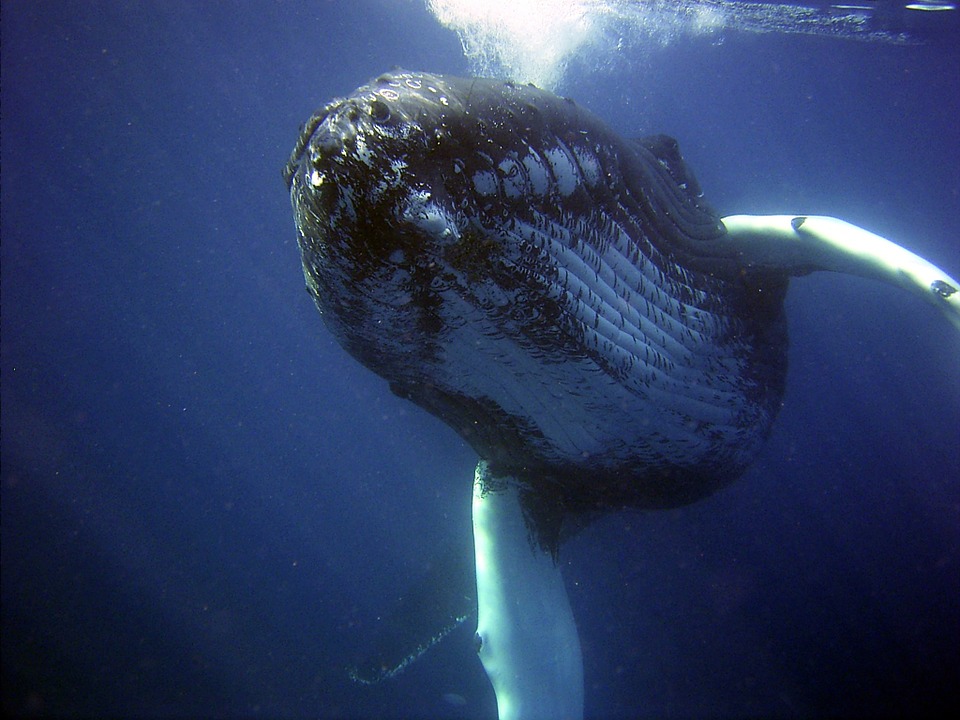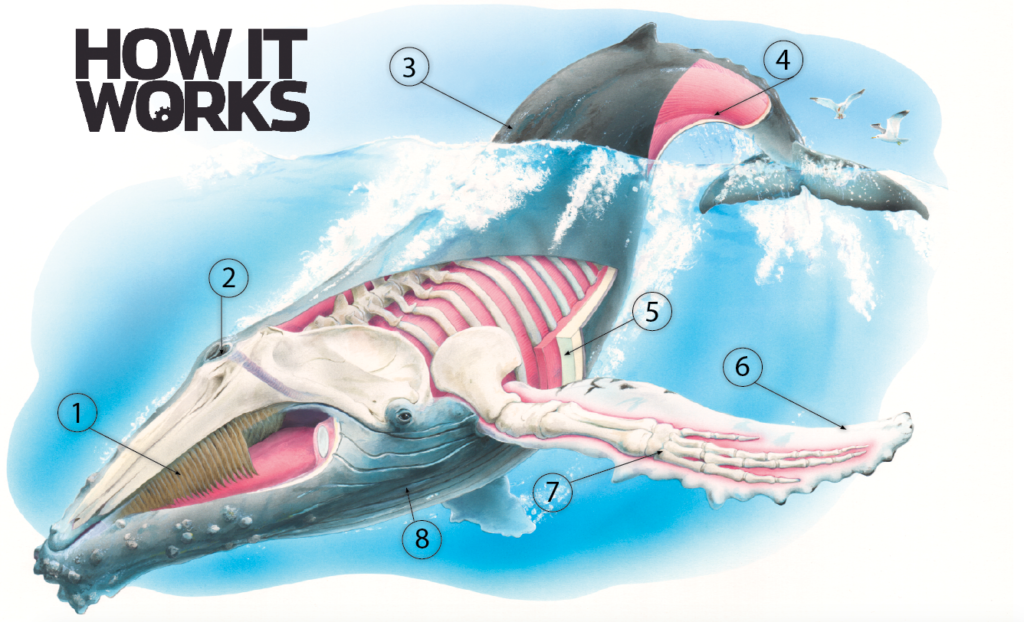Inside the humpback whale
by Scott Dutfield · 13/06/2019

Discover the amazing anatomy of one of Earth’s biggest mammals
Longer than a London bus and weighing more than four African elephants, humpback whales are true giants of the ocean. In the harsh conditions of the sea, humpbacks are anatomically adapted to life under the waves. As one of over ten baleen whale species, humpbacks have an interesting way of feeding. Within the whale’s mouth are around 600 baleen plates made from keratin, the same protein that forms our hair and nails. These plates, together with hairs, act like a sieve through which they filter their daily consumption of around one ton of plankton, flushed in by the surrounding water.
As one of the largest mammals on Earth, these whales fill their lungs with air from a dual blowhole at the top of the head. Under the forces and pressures of the deep ocean, in order to prevent damage to an air-filled lung, their ribcages can flex. The same logic is applied to their eyesight. In order to see underwater, it’s thought that the whites of the whale’s eyes are thick and spongy to cope with fluctuating pressures below the surface.
Beneath their blubber, which can be more than 40 centimetres thick after feeding all summer, lies a skeleton displaying unique signs of this whales’ land-based ancestors. Whales walked on land around 45 million years ago, and vestigial bones remain within their bodies, such as the pelvis. Its prehistoric role allowed for the movement of legs long gone in modern-day whales. Other telltale evolutionary remnants in humpback’s bodies are the finger bones within their pectoral fins, which resemble hands.
Humpback anatomy
What adaptations help these magnificent marine mammals survive?
Baleen
Humpbacks have hundreds of baleen plates in their upper jaws, enabling them to filter out tiny fish and plankton from the seawater.
Blowholes
Baleen whales have two blowholes, while toothed whales have one. Blowholes are equivalent to our nostrils and are protected by a muscular flap that forms a watertight seal.
Breach for the skies
Humpbacks can leap out the water as high as their own body length. These whales have been observed to be very acrobatic compared to other baleen species, performing various leaps, slaps and charges.
Super strength
Powerful muscles enable humpbacks to accelerate to their top speed in just three or four pumps of their flukes (tail lobes).
Blubber
A thick layer of fat called blubber stores energy, increases buoyancy and helps keep the whale’s body warm. Unlike the fat on other mammals, blubber is vascularised, meaning blood can circulate through it.
Long flippers
A humpback’s elongated pectoral fins are the longest of any whale relative to body size. They can be up to one-third as long as its snout-to-tail length.
Ancestral remnants
Whales are mammals and still carry some terrestrial anatomical features from their land-living ancestors, such as finger bones.
Expandable throat
The grooves around baleen whales’ throats are folds of skin that can expand to increase the volume of water gathered while filter feeding.
For more science and technology articles, pick up the latest copy of How It Works from all good retailers or from our website now. If you have a tablet or smartphone, you can also download the digital version onto your iOS or Android device. To make sure you never miss an issue of How It Works magazine, subscribe today!






